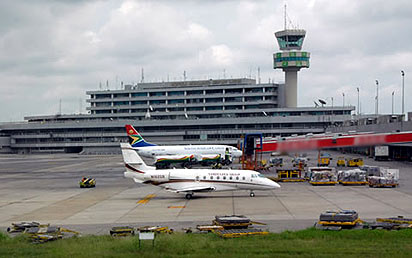The United States is encouraged by China’s efforts to restrain North Korea but Washington will not accept Beijing’s militarisation of islands in the South China Sea, US defence secretary, James Mattis, said on Saturday.
The comments by Mattis, during the annual Shangri-La Dialogue in Singapore, show how Donald Trump’s administration is looking to balance working with China to restrain North Korea’s advancing missile and nuclear programmes while dealing with Beijing’s activities in the South China Sea.
Trump has actively courted support from Chinese president Xi Jinping to restrain North Korea, raising concern among Asian allies that Washington might allow China a more free rein elsewhere in the region.
Mattis said the threat from North Korea was “clear and present” and that Pyongyang had increased its pace of pursuing nuclear weapons.
The United States has struggled to slow North Korea’s nuclear and missile programs, which have become a security priority given Pyongyang’s vow to develop a nuclear-tipped missile capable of hitting the US mainland.
The Trump administration has been pressing China aggressively to rein in its reclusive neighbour, warning all options are on the table if North Korea persists with its weapons programmes.
“The Trump administration is encouraged by China’s renewed commitment to work with the international community toward denuclearisation,” Mattis said.
“Ultimately, we believe China will come to recognize North Korea as a strategic liability, not an asset.“
However, Mattis said seeking China’s cooperation on North Korea did not mean Washington would not challenge Beijing’s activities in the South China Sea.
“There is a lot more between [China] and the United States than just two issues. We are working with China on North Korea because that is also a problem for China.“
The UN security council on Friday expanded targeted sanctions against North Korea after its repeated missile tests, adopting the first such resolution agreed by the United States and China since Trump took office.
In another sign of increased pressure on North Korea, Japan’s navy and air force began a three-day military exercise with two US aircraft carriers in the Sea of Japan on Thursday.
Japanese Defence Minister Tomomi Inada, speaking at the Singapore forum, said Tokyo backed the United States using any option to deal with North Korea, including military strikes, and was seeking a deeper alliance with Washington.
In a sign of the US commitment to the region, Mattis said that soon about 60% of overseas tactical aviation assets would be assigned to the region and he would work with the US Congress on an Asia-Pacific stability initiative.
The Pentagon says it supports “in principle” a proposal by senator John McCain, the head of the US Senate’s Armed Services Committee, to increase military funding for the Asia-Pacific by $7.5 billion.
Mattis said the United States welcomed China’s economic development, but he anticipated “friction” between the two countries.
“While competition between the US and China, the world’s two largest economies, is bound to occur, conflict is not inevitable,” Mattis said.
While eager to work with China in dealing with North Korea, Mattis said the United States did not accept China placing weapons and other military assets on man-made islands in the South China Sea.
“We oppose countries militarising artificial islands and enforcing excessive maritime claims,” Mattis said. “We cannot and will not accept unilateral, coercive changes to the status quo.“
China’s claims in the South China Sea, through which about $5tn in ship-borne trade passes each year, are contested by Brunei, Malaysia, the Philippines, Taiwan and Vietnam.
Mattis also said “extremist groups” must be defeated not only in Iraq and Syria but also in southeast Asia.
The United States was training and advising troops in the south of the Philippines, he added. The United States has a small number of rotational troops in the country.
(TheGuardian US)






